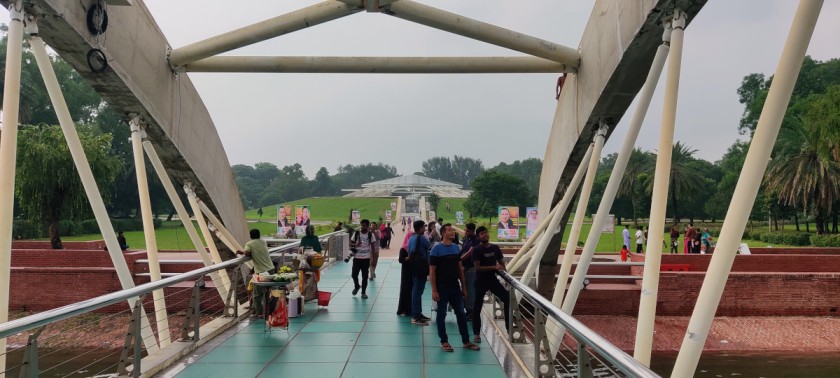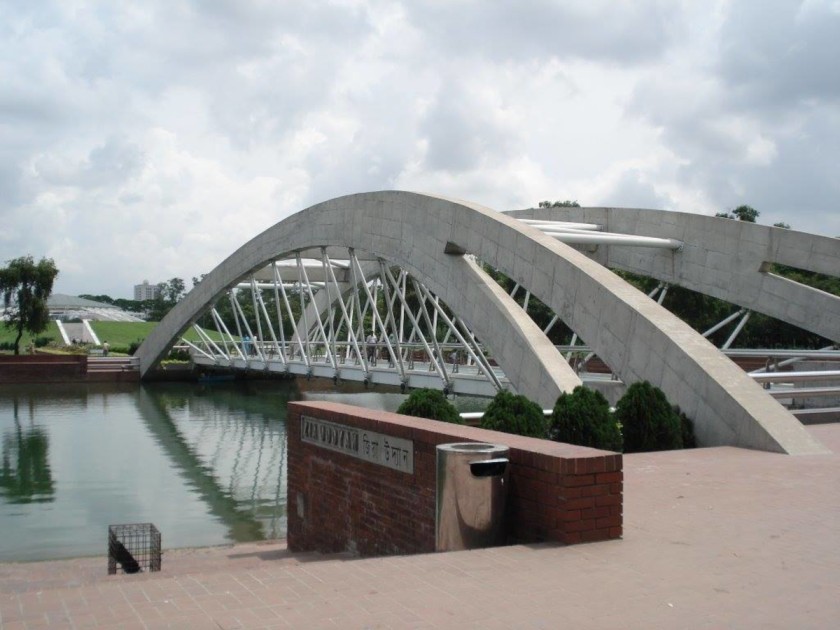Zia Uddan (Chandrima Uddan): Let’s cut through the textbook version—this is the raw, unfiltered story of how a patch of land near Bangladesh’s Parliament became a political battleground. Forget dry facts; here’s what really happened and why it still matters today.
1. The Birth of Zia Uddan: More Than Just a Park
After Ziaur Rahman’s assassination in 1981, his burial site near the Parliament wasn’t just a gravesite—it became a political shrine. Overnight, the military government under President Sattar turned it into Zia Uddan, a pilgrimage spot for BNP loyalists.

Why here?
- Symbolism: Placing Zia beside the Parliament sent a message—he was still “part of the government” even in death.
- Control: The military could monitor who visited, turning grief into a spectacle.
2. The 1996 Name Swap: Rewriting History Overnight
When Sheikh Hasina’s Awami League returned to power, they didn’t just change a name—they erased a legacy. “Chandrima Uddan” wasn’t just about honoring Mujib’s widow; it was a political purge.
The Hidden Drama:
- BNP’s Fury: Supporters saw it as “digging up Zia’s memory.” Graffiti wars broke out—”Zia Uddan” would reappear overnight.
- Awami League’s Move: By renaming it after a family nickname (“Chandrima”), they made it personal—a direct counter to Zia’s cult of personality.
3. What’s Left of Zia Uddan Today?
A.) The Grave: Still there, but now guarded like Fort Knox. Try taking a selfie—see how fast security intervenes.
B.) The Politics:
- May 30th: BNP crowds still swarm, but police outnumber them 10:1.
- Quiet Days: The park’s lush, but the tension? Thicker than Dhaka’s traffic.
Pro Tip: Visit at dawn when the guards are half-asleep—best chance to see Zia’s tomb undisturbed.

4. Why This Park Still Divides Bangladesh
- For BNP Folks: It’s hallowed ground—renaming it was like “spitting on Zia’s grave.”
- For Awami League: A necessary correction—why glorify a military ruler?
- For Everyone Else: Just another reminder that in Bangladesh, even parks aren’t neutral.
FAQs (The Stuff Locals Whisper About)
Q: Did they really just rename it, or did they change the grave too?
A: Grave’s untouched, but the vibe? Totally different. Less “memorial,” more “heavily monitored public space.”
Q: Can I talk politics there without getting side-eyed?
A: Sure, if you enjoy armed guards giving you the look. Better to nod and move on.
Q: Why do rickshaw drivers still call it “Zia Uddan”?
A: Old habits die hard—plus, “Chandrima Uddan” doesn’t exactly roll off the tongue.
Q: Any weird rituals here?
A: BNP supporters sometimes tie dor (threads) to the fence—a folk tradition mixing politics and superstition.
Zia Uddan Dhaka: What You Really Want to Know
1. Okay, so what’s the deal with this park’s name changes?
Man, this is confusing even for locals! The place by Parliament was originally Zia Uddan, named after you-know-who (Ziaur Rahman). Then in ’96 they slapped on the name Chandrima Uddan to honor Mujib’s wife. Some old-school folks still call it Zia Uddan though – depends who you’re talking to.
2. Can I still find Zia’s grave there?
Yeah yeah, it’s still there – they didn’t dig him up or anything! But the whole area’s got way more security now. You can visit, but don’t expect it to be like some peaceful memorial. More like… tense, you know?
3. Why all the fuss about a park name?
Bro, this is Bangladesh politics 101! For BNP folks, it’s like erasing history. For Awami League, it’s correcting history. For regular people trying to take a walk? Just another headache in Dhaka!
4. What’s the vibe like there now?
Kinda weird tbh. They made it all nice with flowers and stuff, but you can feel the political tension. Guards everywhere watching you. Not exactly relaxing!
5. When’s the craziest time to visit?
Hands down May 30th – Zia’s death anniversary. BNP supporters show up in droves. Police everywhere. If you want drama, go then. If you want peace, maybe pick another day?
6. Any insider tips for visiting?
- Come early before it gets crowded
- Dress kinda normal (no political party colors)
- Don’t try to take too many photos by the grave
- Maybe grab some fuchka from the vendors outside first
7. Did they change anything besides the name?
They spruced it up – more trees, better paths. But honestly? It lost some of its old character. My uncle says back in the day it felt more… meaningful, you know?
8. Why do some people get so emotional about this?
Sigh… because in Bangladesh, everything’s political. Even a park bench isn’t just a park bench. This place represents like 50 years of our history’s drama.
9. Can I bring kids there?
Sure, but they’ll probably be bored. Unless they’re really into political history or want to count how many armed guards they can spot.
10. What’s something most people don’t know about this place?
The trees near the grave are actually really old – some were planted right after Zia was buried. If trees could talk, man, the stories they’d tell…
Conclusion: A Park That’s Really a Time Bomb
Chandrima Uddan isn’t just lawns and graves—it’s 50 years of Bangladesh’s political blood feud, frozen in one green space. The next time you pass it, remember: that quiet park holds louder echoes than any rally.
Want the real experience? Go on May 30th. Just don’t wear party colors—unless you’re itching for drama. Thanks for staying with One Light Journal BD.
